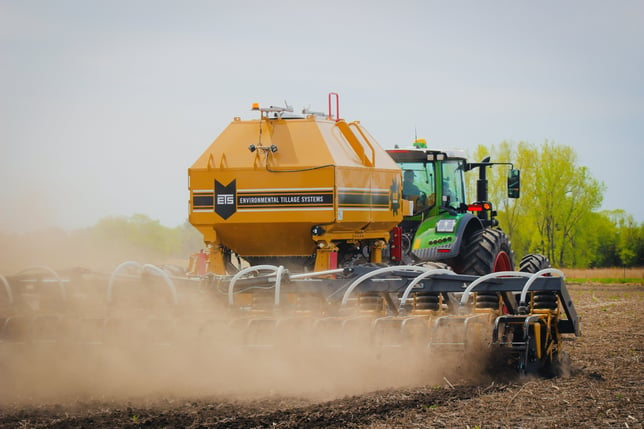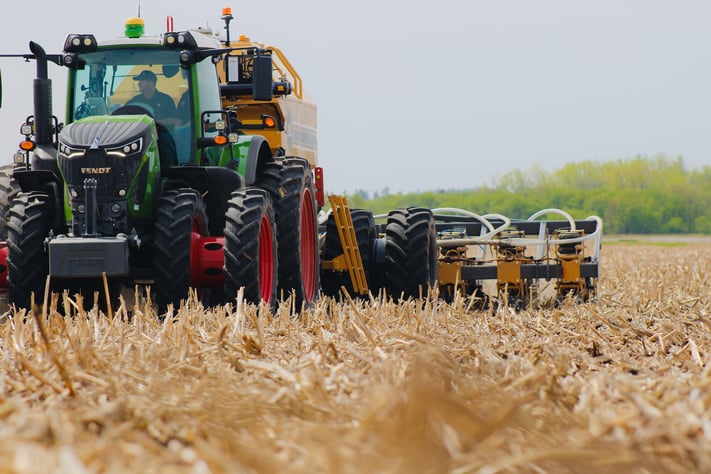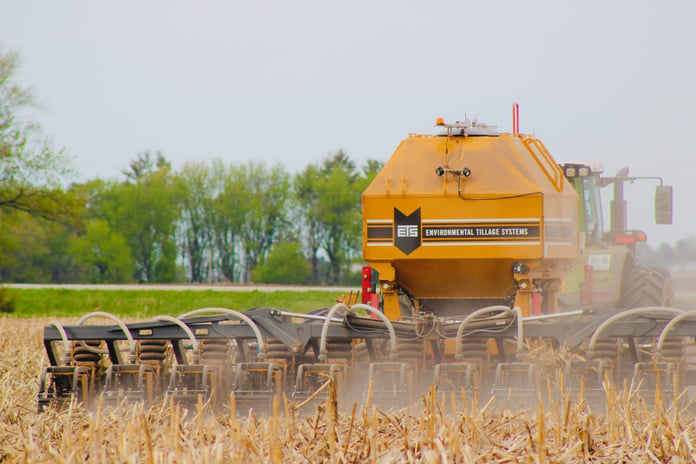2 Major Reasons to Consider Strip-Tilling
Considering making the switch to strip-till? Hear from some of the experts in the business on why it's beneficial to consider switching.
When it comes to making the switch to strip-till, this decision, most of the time, doesn’t come lightly. There are many factors to consider when deciding if strip-till is for you: series, row-unit type, benefits for yield and field, and, more importantly, cost. Change can be challenging, and decisions can impact future planting seasons. However, change can be good; if you do it right, you could benefit from it. Listed below are two reasons why you should consider switching to strip-till.
- Return on Investment
- Overall Soil Health

Return on Investment
Return on investment is top of mind for farmers when considering a switch to strip-till. Research from the University of Minnesota in 2019 has shown that strip-till saved farmers $19.50 per acre compared to the disk/chisel plow rotation (Economics of Tillage, 2020).
“ROI is not calculated solely by dollars from an increased yield resulting directly from a practice change. ROI with strip-till is incremental and comes in many forms, such as reduced labor needs - often at key times in the growing season, reductions in size and amount of equipment needed and associated costs, gradual benefits gained through increases in soil health, as well as many other pieces that when added together can be very substantial,” said Brent Brueland, VP of Sales & Marketing at Environmental Tillage Systems (ETS).
Having enough labor to complete fieldwork can be challenging. Generally, farmers can sell most of their other tillage equipment when they switch to strip-till. Some of our customers have attested to this. They can get by with only a few tractors, a planter, and their strip-tillage system. The SoilWarrior from ETS is a one-pass strip-tillage and nutrient application system, dramatically reducing fuel costs and labor needs.
Switching to strip-till with the SoilWarrior does require a significant capital investment. Dave Sender, ETS Regional Sales Manager, said, “Initially, the upfront cost is difficult for some growers to swallow, but when they realize they can drastically reduce their inputs like fuel and fertilizer and not sacrifice yields, it changes their mind in a hurry. If you’re coming from a conventional system, it could even mean you have the ability to sell off several pieces of equipment you will no longer need.”
Labor, fuel, and time aren’t only the things you’ll be saving, however. The SoilWarrior system allows you to apply fertilizer only where you need it. With variable-rate technology available, you can utilize the 4Rs of nutrient stewardship, and apply fertilizer at the right rate, time, and place.
“With a SoilWarrior, it also affords you flexibility in your tillage and fertilizer application program. You can run in the fall, or you can run in the spring, or both. Weather doesn’t always cooperate, so having that flexibility is very important most years,” said Sender.
When growers first start strip-tilling, many are unsure of which path to take when applying fall or spring strips. Research conducted at Iowa State University from 2016-2018 showed no statistical difference in yield when deciding to apply fall or spring strips. This study included three fields where the nutrient application was different for each. These plots included fall-only strip-till with phosphorus (P) and potassium (K), spring-only strip-till with P and K, and fall strip-till with P and K and spring strip-till. These results show that farmers have greater flexibility when deciding to apply fall or spring strips when it comes to weather conditions, labor, and much more.

Overall Soil Health
As we say, you only disturb 33% of the soil when strip-tilling. In addition to the cost savings and seedbed preparation, you’re also a better land steward. Some other benefits that can result from strip-tilling are reduced improved water infiltration and drainage, enhanced retention of plant available water, less soil erosion, and an increase in soil organic matter. Strip-tilling also results in better carbon sequestration.
Crop residue is an excellent source for building a good soil structure, retaining soil water, and providing a food source for bacteria and fungi. However, heavy residue covers can cause slow germination and delayed planting due to cooler temperatures. During operation, a strip-till machine will move residue aside, exposing the strips, unlike other tillage options.
Iowa State University conducted a study from 2001-2002 on strip-tilled loam and clay loam fields and showed that soil temperatures were 2.1 to 2.4 degrees warmer than in no-till fields. This temperature difference increases the plant emergence rate (Science Direct, Soil and Tillage Research, January 2005). Similarly, a research study performed by the University of Minnesota showed comparable results on a continuous corn rotation and corn-soybean rotation. The soil temperature advantage in strip-till allows for faster plant emergence.
Greg Nielsen, ETS Service Technician, said, “warm strips lead to warmer, happier seeds.”
Strip-tilling can be implemented in your operation regardless of soil type or geography. In addition to improved ROI and soil health, your operation could realize many other benefits we haven’t touched on. Strip-tillage can be successful as long as you’re willing to make the change.
Ready to Make the Switch?
If improved ROI and soil health sounds like a good fit for your operation, get a quote on a SoilWarrior. The ETS team works hard to make sure your machine is field-ready, and your transition to strip-till goes smoothly. Your SoilWarrior purchase comes with a network of support to ensure your success.
References
The University of Minnesota, Economics of Tillage. 2020.
Licht, Mark A. and M. Al-kaisi. Strip-tillage effect on seedbed soil temperature and other soil physical properties. Science Direct, Soil and Tillage Research, Volume 80, Issue 1-2, January 2005, pgs 233-249.

Comment